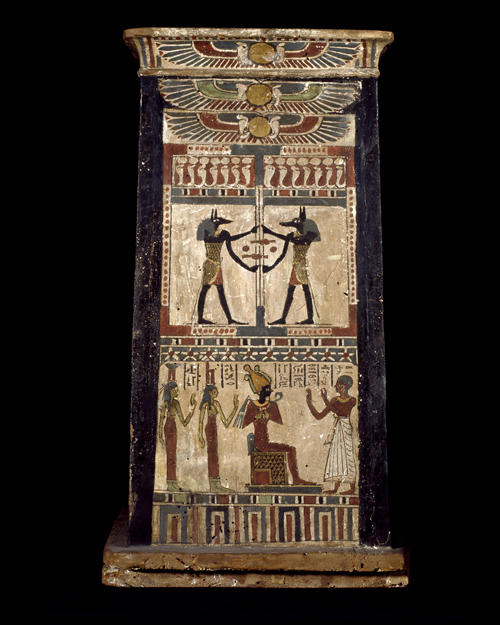
© 2001 Musée du Louvre / Georges Poncet
Ptolemaic period, 3rd-2m centuries BC
Plastered and painted wood
H.: 57 cm; W.: 27.5 cm; D.: 31 cm
Department of Egyptian Antiquities, Musée du Louvre
(E 13321)
This funerary chest imitates the form of a portable chapel. On the front, Anubis, depicted twice, undoes the locks to the two doors symbolizing the gates to heaven or the Beyond. On the lower register, the deceased, named Hetepimen, worships Osiris and his sisters Isis and Nephthys. The rear panel repeats the same motif. Under the guardian deities are shown, in the middle and lower registers, the relics of the two major cities sacred to Osiris, Abydos (with its reliquary) and Busiris (its djed pillar), flanked by deities. The theme of the two side panels relates to the underworld: below an alternating frieze of Osiris’s djed pillar and Isis’s tit knot is a register of worshiping funerary spirits, below which are the four sons of Horus, who preside over the canopic jars that contain the deceased’s viscera. Pictured on another register are spirits armed with knives (left side) and flame-breathing serpents (right side), while the solar barque is drawn by wild dogs on one side and by human-headed birds on the other. The sarcophagus of the deceased and his mourners replace the god Re. These chests, which became widespread at the end of the Late Period and during the Ptolemaic Period, were placed near the sarcophagus, and held the utensils and linen used for mummification, as well as the deceased’s viscera (thereby replacing canopic jars).